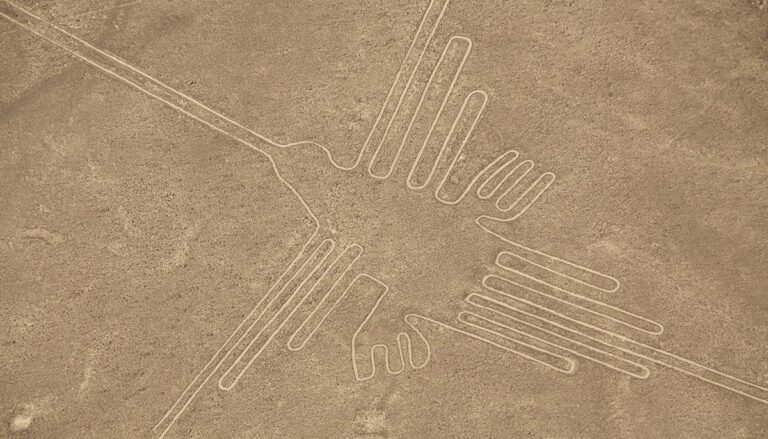If the famous Nazca Lines in Peru – which can only be seen from the air – weren’t already amazing enough, researchers say they have discovered 168 new geoglyphs. There’s even one that looks like Homer Simpson!
The mystery of the Nazca Lines
The Nazca Lines are one of the marvels of the world. They were drawn in the soil of the Nazca Desert, with many of the shapes representing a variety of animals, fish, birds, insects, trees, flowers, and a human.
However, the most incredible fact about the Nazca Lines is they can mostly only be discerned from the air. People had mistaken them for trails throughout history. It was only when pilots flew over them in the 1930s that it was discovered they were actually geoglyphs, History reports.
A geoglyph is a large design or motif produced on the ground by durable elements of the landscape.
Scientists have debated their purpose ever since. The area is designated as a UNESCO World Heritage Site.
Origin of the Nazca Lines
The lines were etched into the ground in the Peruvian coastal plain about 250 miles south of Lima, Peru, by the ancient Nazca culture in South America. Anthropologists believe this culture, which began around 100 B.C. and flourished from A.D. 1 to 700, created the majority of the Nazca Lines.
The first published mention of the Nazca Lines was by Pedro Cieza de León in his book of 1553, calling them trail markers. But they were rediscovered by Peruvian military and civilian pilots, and in 1927 Peruvian archaeologist Toribio Mejía Xesspe spotted them and later discussed them at a conference in Lima in 1939. In 1940-41, American historian Paul Kosok, from Long Island University in New York, is credited with being the first scholar to study the Nazca Lines in depth.
Peru’s Nazca Lines: 168 new geoglyphs discovered
Peruvian and Japanese researchers from Yamagata University announced the discovery this month of 168 new geoglyphs at the site of the Nasca Lines, CNN reported.
The drawings portray humans, camelids, birds, killer whales, felines, snakes, and more. Around 50 of the large-scale drawings represent human-like figures, and one even looks like Homer Simpson, the New York Post reported.
Researchers spent two years scanning the UNESCO World Heritage site on Peru’s southern Pacific coast using aerial photos, drones, and field surveys.
Jorge Olano, the head archaeologist for the Nasca lines research program, said the new figures averaged between 6.56 and 19.7 feet in length.
Before now, and since 2004, researchers have already discovered 190 new figures in the area.
These discoveries bring the total known number of lines to 358. One archaeologist told the Guardian he believed that scientists have only found 5 percent of all the Nazca Lines that exist.
In addition to using drones to search for additional lines, researchers said they would be utilizing artificial intelligence (AI) programs that can predict and detect patterns more quickly and effectively than the human eye, as well as to help inform the preservation of the lines.
Like all of the previous figures, the new shapes can only be seen from the air. The purpose of all the Nazca Lines geoglyphs remains a mystery. Some have speculated they were meant for gods in the sky, that they are guides for alien spacecraft, or that they reflect the stars or have an astronomical purpose.





